ENGLISH


ENGLISH
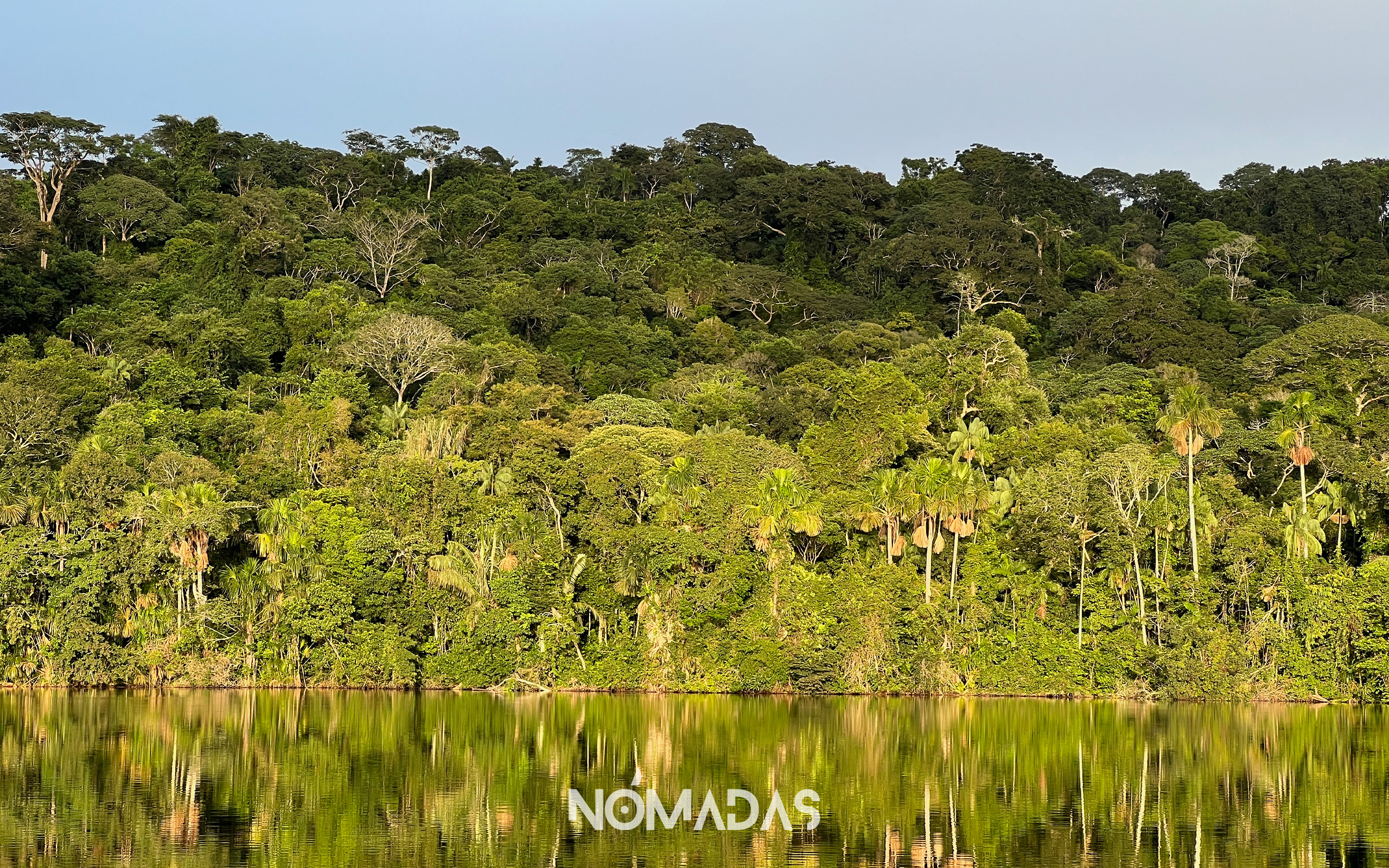
The magical green of Lake Chalalán in Madidi.
In the heart of Madidi National Park, the most biodiverse in the world, San José de Uchupiamonas stands as a stronghold of ecotourism, facing threats and challenges under the shield of unity among inhabitants with ancestral heritage who rise every day to live in harmony with nature.
September 27th, 2023
Revista Nómadas
Beatriz is fortunate to wake up with a smile on her face and to breathe pure air, surrounded by a dreamlike landscape. She is in the heart of Madidi National Park, the most biodiverse protected area in the world. It is the place where the Andes meet the Amazon: they observe each other, merge, and embrace with all the force of their diverse vegetation, vast as the size of the forests and the grandeur of their mountains. It is the place where more than 12,000 species of vascular plants, 1,100 species of birds, and nearly 300 species of mammals thrive. Additionally, Madidi boasts cloud forests that kiss the clouds with their orange-bellied, lowland jungles, rivers, musical streams, swamps, and even glaciers that, like Colonel Aureliano Buendía from «One Hundred Years of Solitude,» invite exploration of the ice.
Madidi National Park, Bolivia’s natural jewel, shines as a biodiversity sanctuary that embraces 50% of the country’s plant and animal species.
In the midst of this natural marvel lies San José de Uchupiamonas, a community located in the La Paz department, nestled within Madidi, forging its development by promoting ecotourism and advancing its governance process to better and sustainably utilize its economic resources while battling various threats, such as illegal mining and other ceaseless human activities.
In Madidi, one can reach mountains that soar to 6,100 meters above sea level, but also lowlands with virgin jungles. Madidi National Park is one of Bolivia’s 22 protected areas, located in the northern part of La Paz and spanning 1,895,750 hectares, housing more species than the entire Amazon: 11% of the world’s birds, 6.8% of butterflies, 4% of mammals, and 3% of the world’s plants. Moreover, there are species found here that exist nowhere else in the world, as well as others that are endangered.
Madidi National Park, Bolivia’s natural jewel, shines as a sanctuary of biodiversity that embraces 50% of the country’s plant and animal species. Among its lush forests, it harbors 50% of the majestic palm trees that give life to the jungle. Its domains are home to 71% of Bolivia’s birds, astonishing the world with 11% of all known bird species. Only a handful of nations on the planet surpass its ornithological wealth. Furthermore, Madidi shelters all seven species of deer that set foot on Bolivian soil, and eight of the nine native felines find refuge in its corners, as if the park were their secret kingdom. The figure is also astonishing in the world of bats, as 62% of these winged creatures find protection in its nocturnal realms. But its role transcends mere numerical splendor, as Madidi becomes a guardian of species threatened at a continental level. Here, the elusive taruka, the imposing Andean bear, the enigmatic jaguar, the elusive londra, the red howler monkey, the elusive marsh deer, the mysterious borochi, the majestic condor, the harpy eagle, the stealthy black caiman, and the serene land and water turtles find refuge in an Eden that is, above all, a beacon of conservation and hope.
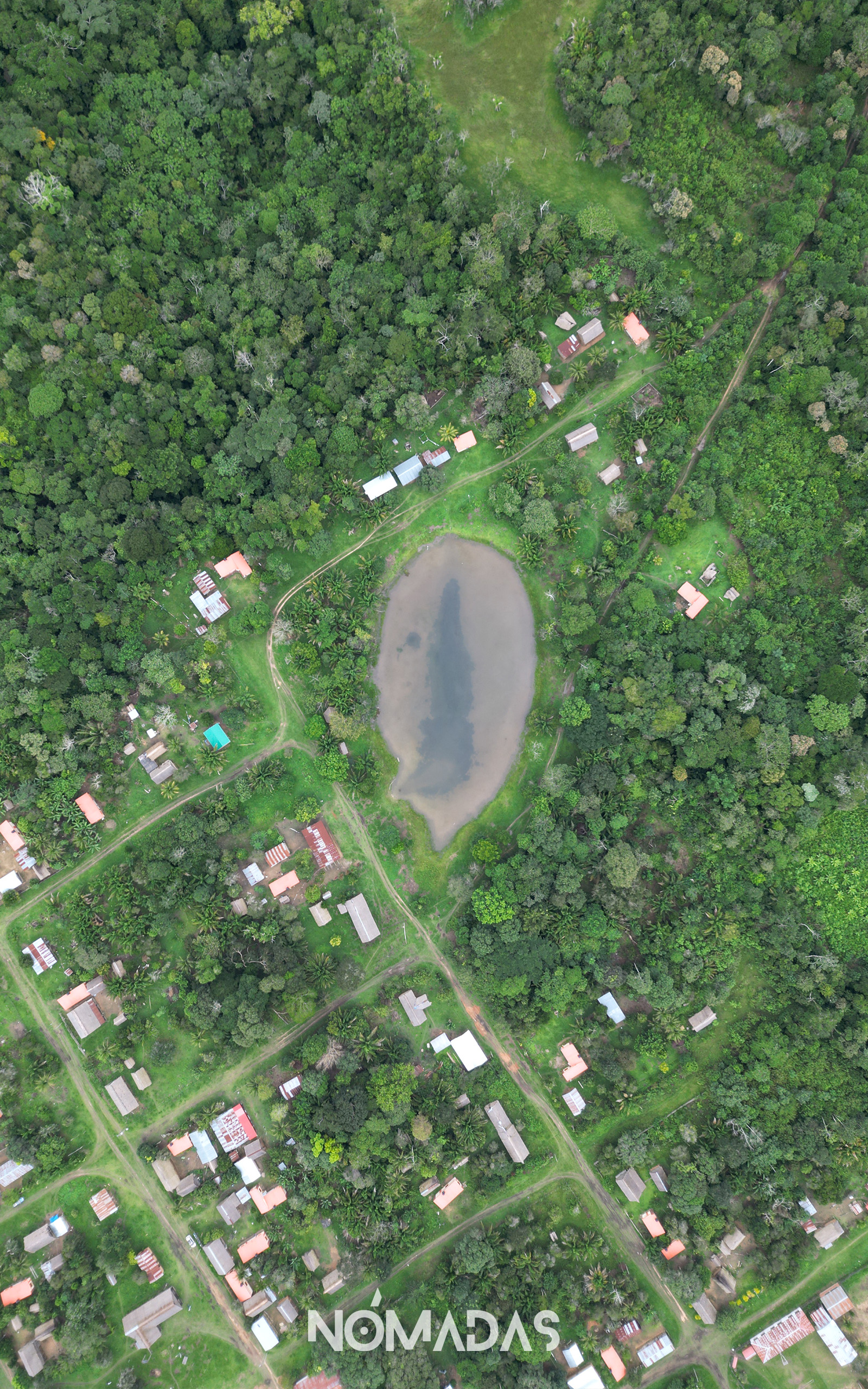
The eye of the lagoon in San José de Uchupiamonas.
Madidi is a large house where the many lives that nest there enjoy the sunsets that the almost always blue sky gifts, evenings that arrive embraced by a serene and starry night.
Here, in this epicenter of the world’s nature, the night sails on a blue ocean of stars that, from her window, Beatriz Amutari Cartagena contemplates with immense wonder that seems as if every time were the first time she discovers such a marvel.
Beatriz, a 65-year-old woman born in the community of Tumupasa and now residing in San José de Uchupiamonas, considers herself blessed to live in the heart of the Amazon rainforest. In a way, she makes a living from ecotourism. She rents a couple of rooms in her house to visitors and also cooks typical dishes that leave diners licking their fingers due to the flavor of the food prepared with ingredients and spices gifted by Madidi. Beatriz wakes up every day at 5:00 AM, and her day ends a little before midnight. Her husband is in the municipality of Rurrenabaque, dedicated to agriculture.
«We are farmers. He (her husband) is tending to his little farm, and I grow rice, corn, plantains, walusa, which is like potatoes,» she tells Revista Nómadas from her home, a home amidst the majesty of Madidi.
Her house carries the warm aroma that firewood leaves in the air: in the walls of her wooden house, in the food savored with all the senses, in the paths that step by step invite exploration of the forest, embraced by the strength of its trees.
Beatriz doesn’t set aside her concerns about the threats facing Madidi Park. One of them is illegal mining. She laments that now the Tuichi River is contaminated and flows very close to her community with murky waters. She explains that this river, on Saturdays and Sundays, runs clear, but starting on Mondays, it turns dirty due to mining activities that stir up soil and contaminate the river with mercury.
A mountainous river that changes color.
Sometimes transparent like the face of a new moon.
Sometimes dark like the mouth of a deep cave.
Beatriz also takes pride in being one of the women who prevented miners from settling in San José de Uchupiamonas. Last year, she stood in their way when they tried to pass through the town on their way to the Tuichi River. «Colombian miners came, and I told them, ‘I will enter your country to exploit your wealth, and you will immediately stop me. So you should vacate immediately and return,'» she recounts with noticeable annoyance.
In this remote corner of the Earth, Iris Mamani stands as a voice from San José de Uchupiamonas. Born on this very land, her education took her to distant horizons, but three years ago, she returned home with a clear purpose. At 37 years old, Iris wakes up blessed to breathe pure air, though her thoughts are also colored by concerns. In the depths of her gaze, two challenges that affect her community are reflected: the lack of internal unity and the looming threat of large-scale mining in contrast to tourism projects.
Madidi National Park is a unique and largely unexplored place. It has remote, pristine areas with jungles and valleys crossed almost exclusively by wild rivers. There, the animal kingdom includes otters and tapirs, caimans and capybaras, which are the world’s largest rodents. But there are also hundreds of species that remain unknown to this day.
Madidi is an unknown world.
A world that Beatriz fights to protect.
***
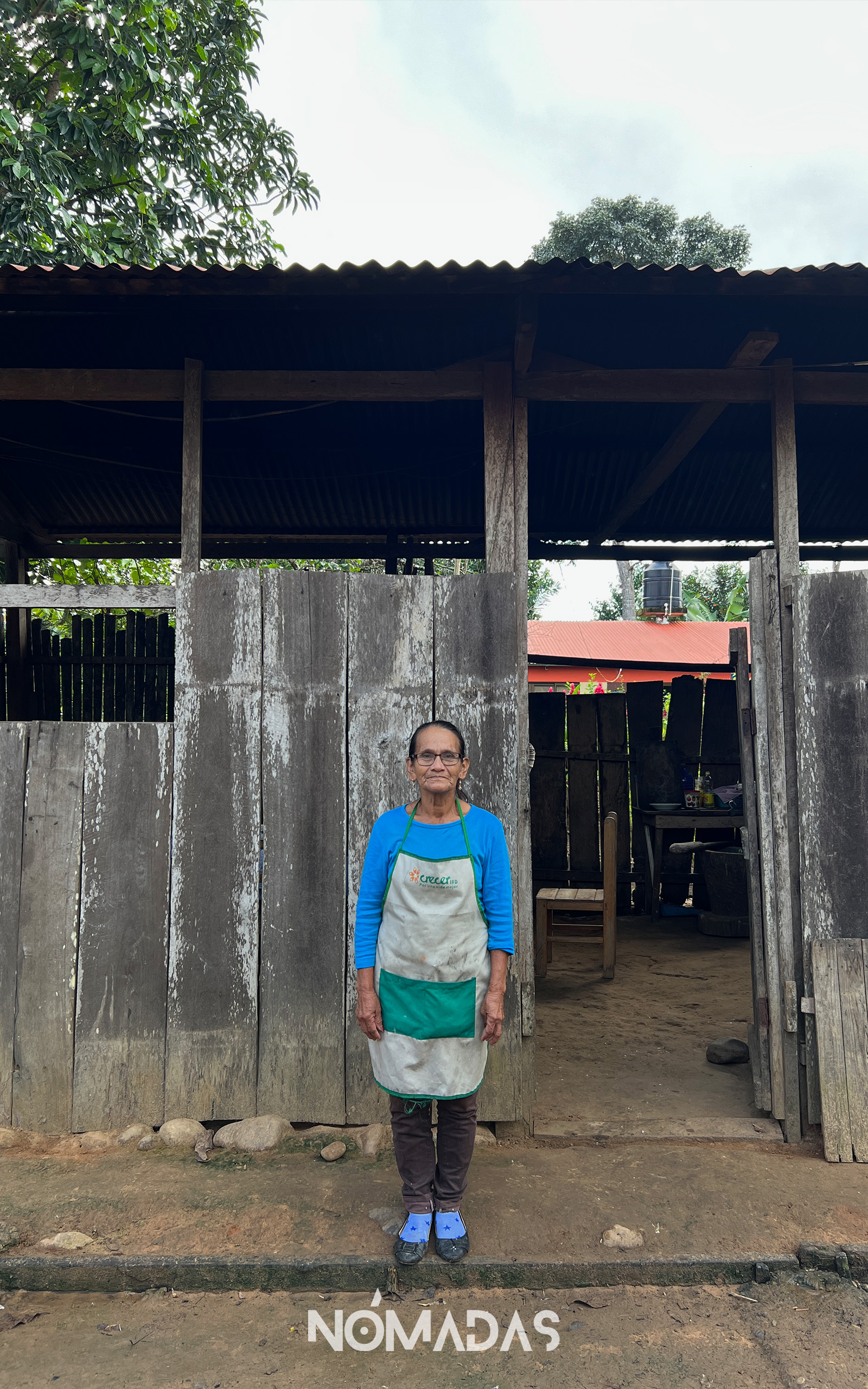
Beatriz Amutari Cartagena in San José de Uchupiamonas.
Beatriz Amutari Cartagena is among the multitude of neighbors who have gathered at Casa Grande, an emblematic place where they come together to discuss topics of vital importance.
The hall is constructed with sustainably collected wood bark. Through the large windows, the wind rushes in from the Madidi mountains, and those inside enjoy a perfect climate, as if they were under the shade of many trees.
It’s mid-May, and Beatriz and her neighbors are gathered with representatives from the Nativa Foundation and Conservation International (CI), two organizations that entered Madidi to work with them on conservation plans but also to advise its residents on executing sustainable projects, such as ecotourism.
Iván Arnold, from the Nativa Foundation, doesn’t shy away from praising Madidi. He says that in terms of vertebrate animals alone, there are around 2,000 species. He proudly states that the number of bird species exceeds 1,000, which accounts for 11% of the total bird species worldwide.
Iván Arnold, as big as he is, as vast as his dreams, also assures that the number of mammals is impressive, nearly 300 species. With reptiles and amphibians, there are over 100 species. These numbers are astounding, and that’s why they classify Madidi as the most biodiverse park in the world. He knows that all this natural wealth deserves to be cared for by Bolivians and the entire world, as it is one of the few places left on the planet with these characteristics and such beauty.
Wherever you look, wherever you go, nature gifts the song of a bird and also the sound of silences when one is deep in a forest.
«Nativa began working in this region of the Amazon through an agreement with Conservation International that we have had since last year. The main objective of this proposal is to support the governance of San José de Uchupiamonas. They have 210,000 hectares of land and many needs. So, we must support governance to understand how they can sustainably utilize their natural resources to have their small farms, yuca, plantain, rice production, but without affecting the other important aspect, which is the tourism and environmental aspect. We must understand that women have a different vision, fortunately; here, we no longer talk about traditional mother centers in the classic structure. They are entrepreneurs; they want to create businesses, and Nativa supports them in obtaining their legal status,» highlighted Arnold.
And one of the projects supported by Nativa and Conservation International is the consolidation of ecotourism in Madidi areas. One of them is in the community of San José de Uchupiamonas, a Community Territory of Origin (TCO) that, in comparison, is as vast as the protected area of Tariquía in southern Bolivia. In this population, several community project initiatives focused on tourism have been established. There are cabins to enjoy the majesty of nature, boat rides crafted by indigenous people on the Amazon rivers, hikes through unique jungles, and views of wild animals that appear on the horizon when least expected. There are also hammocks embraced by trees, camping spots where you can see the stars, and legendary paths bordered by multicolored mushrooms, connecting San José with its lagoon, which from above looks like an ever-watchful eye, gazing towards the untamed Tuichi River.
Iván Arnold describes San José de Uchupiamonas as the warm place where there are simple houses in the countryside, but entirely dignified. He says that the community members in the area can receive any tourist with first-class conditions, with cleanliness, fresh food, and a friendly treatment for tourists.
«Sometimes, in the countryside, people are very shy, they hide, don’t want to come out, here, on the contrary, they engage in conversation, can share stories, and I think all of that is also, in some way, the contribution generated by Chalalán, the first eco-lodge managed by the community members of San José de Uchupiamonas,» says Iván, who is contemplating the lush trees of Madidi. He looks at them with admiration, with immense wonder because he knows that here, in this part of the planet, one of the greatest lungs that provides pure and serene air exists.
Chalalán is the pride of San José de Uchupiamonas. It is the flagship sailing in the waters of sustainable tourism in Madidi. It is a community enterprise dedicated to ecotourism for 23 years and is now sustained by the work of its community members. Yorlan Laura Queteguari is part of the tourism project in the community. Her father was one of the founders of the Chalalán agency, and now Yorlan is a partner and the manager. She is happy with the work she does and the efforts that are boosting the increase in tourists, whose flow had dropped due to the blow dealt by the COVID pandemic to the global economy.
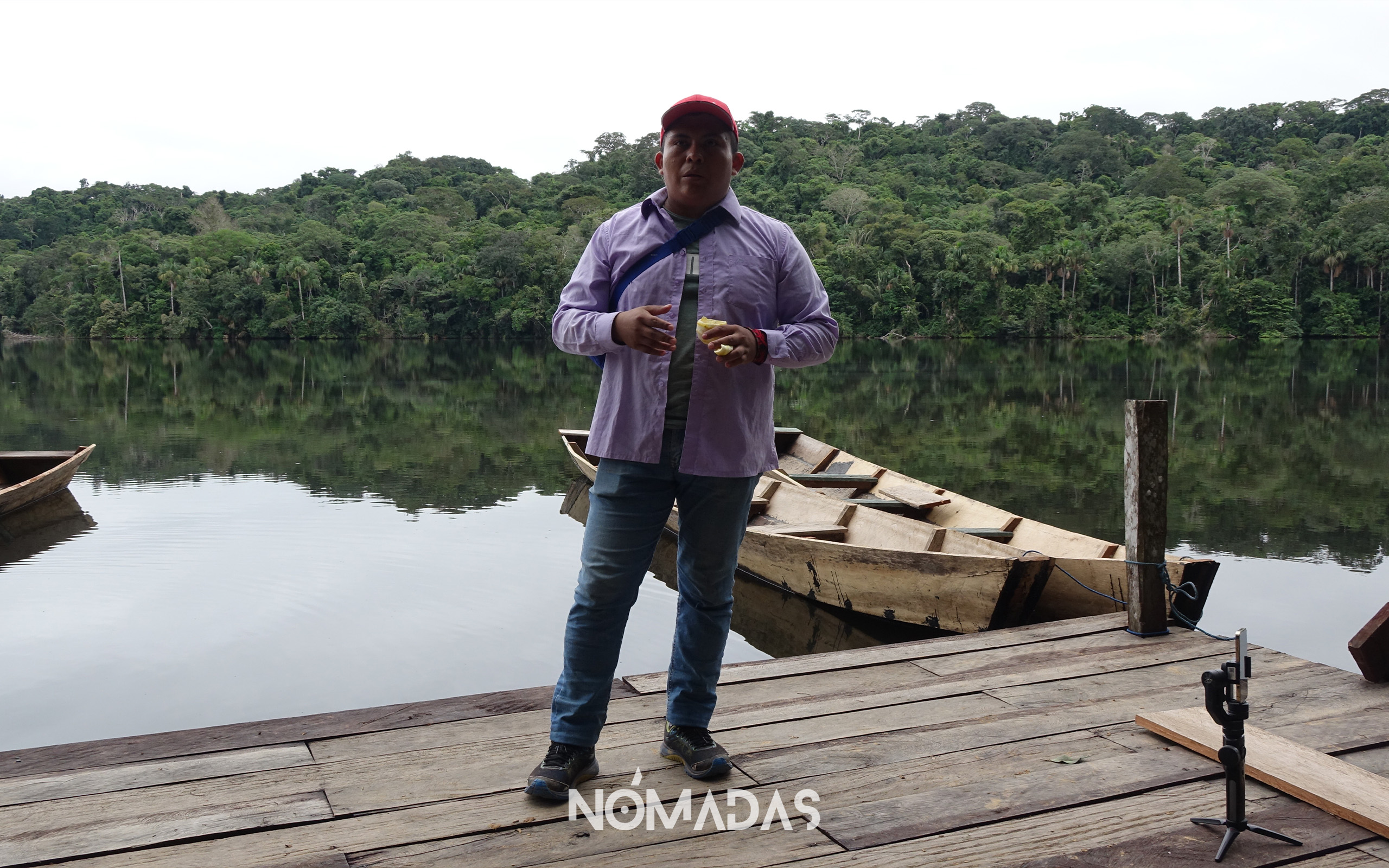
Jorlan, with the challenge of strengthening Chalalán.
«Chalalán represents many things, both for the people of San José and for Bolivia and the world. For the people of San José de Uchupiamonas specifically, it means progress, better living conditions, better health care and education, sources of employment so that people don’t emigrate from the town. Chalalán has also been covering support in terms of territory because it helps conserve it,» emphasizes Yorlan, while her gaze turns to the green universe that can be seen from the lagoon’s shore, where the birds’ songs offer a musical concert that seems out of this world.
Here, in this epicenter of the natural world, the night sails on a blue ocean of stars that makes it impossible to forget such a tremendous spectacle of nature.
Chalalán also reinforced the sense of solidarity in the Madidi communities. Beatriz Amutari remembers that difficult day when she fell ill. To fight for her life, the only possibility left was to go to the hospital in San Buenaventura (La Paz) or Rurrenabaque (Beni), two sister towns facing each other, barely separated by the Beni River. It was on a Chalalán boat that she was rescued and able to reach the hands of a doctor before it was too late.
But Chalalán is not the only tourist project in San José de Uchupiamonas or along the steep Tuichi River. There are seven other initiatives that were established by the residents of San José, and one of them was conceived in Spain.
Pedro Macuapa Quetegari is 48 years old, and between 1995 and 1996, he lived in the Iberian country by invitation from a friend. In 1997, he returned to his community to found El Berraco del Madidi, an ecotourism venture that began with equipment brought from Spain.
El Berraco del Madidi is located between San José and Rurrenaque, beside the Tuichi River. Those who arrive at this ecological center are attracted because they can sleep in tree-embraced campsites, by the murmuring of the river, and by the leisurely flapping of birds flying in a pure sky bathed in the rays of a round sun that descend slowly, as if they were raindrops.
César Mamani Capiona is the president of the TCO San José de Uchupiamonas. The leader explains that the town is undergoing projections based on land and territory issues to advance in its development, both in agriculture and tourism. There are also other sources of income, such as livestock and dairy.
Eduardo Forno, the director of Conservation International, with his clear and tranquil voice, which is as serene as a spring but as profound as his knowledge about the benefits of the Amazon, lists three reasons behind the importance of Madidi. The first and most obvious, he says, is the rich biodiversity that this natural reserve harbors. In this regard, the expert mentions that before Madidi was declared a national park, Conservation International had already discovered its ecological and biodiverse virtues through a rapid assessment. The second reason, he emphasizes, is the geographical location of the reserve, and finally, the human aspect living in this important area of the country.
«It is a source of pride for Bolivia to have Madidi, it is a source of pride for the municipalities, it is a source of pride for the department (of La Paz), it is a source of pride for the country, for all Bolivians,» summarizes Forno the great importance of this green lung that shelters a myriad of lives and generates pure air and rains that cross the country’s borders.
The rains that fall on the other side of the Andes, on the shores of the Pacific and the Atlantic, travel from the heart of Madidi, riding on the «flying rivers,» and there, in distant lands, they fall so that life can continue its course.
Forno details that numerous institutions worked and still work to preserve the integrity of Madidi. But, as Conservation International, the organization that binds them to the natural reserve, recalls, the work dates back many years, especially with the indigenous people of the Tacanas.
Forno also highlights the work that was done to give birth to Chalalán, the community ecotourism enterprise run by the community of San José de Uchupiamonas, which day by day seeks to preserve the Madidi forest.
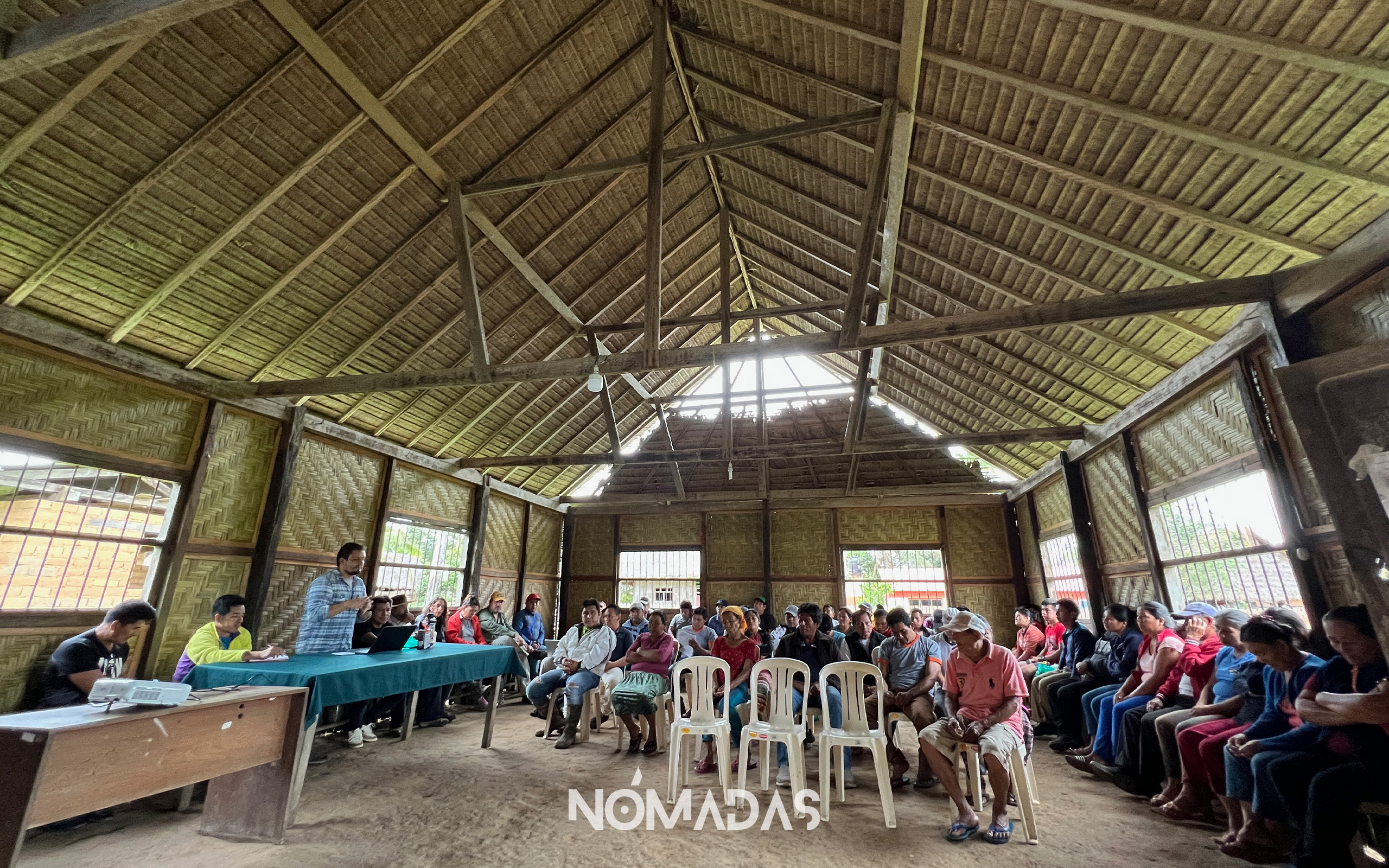
The residents of San José in a meeting about the present and future.
«Chalalán comes as a coincidence of life and is an accidental case where three adventurous people had an accident, and only Joseph Ginsgber (an Israeli citizen) survived, who was rescued by the people of San José de Uchupiamonas, and in return, he looked for a project to support them in tourism. When he got the project, which is a project of the Inter-American Development Bank (IDB), the IDB said ‘wonderful,’ but who will help them execute it, and that’s how they approached Conservation International and supported its creation,» Forno recounts.
Thus, in the green domains of San José, an enchanted corner of Bolivia, a story of challenges and hopes is woven. Eduardo Forno passionately narrates the journey that has led this place to face its destiny on a path of natural resources and sustainable development.
«It is essential to have a strong tourism project, like Chalalán, which has been so successful that it allowed them to finance the titling of their TCO themselves, being the only TCO in Bolivia that managed to self-finance in this way. This is truly impressive and contributed immensely. However, there was an internal governance challenge that we have been addressing for many years,» says Forno, highlighting the triumphs and challenges of this paradise nestled in nature.
The roots of the problem, as explained by Forno, are embedded in the diversity of perspectives regarding the use of land resources. «This governance problem,» Forno specifies, «arises because some want to carry out mining activities, while others prefer timber extraction or even introducing cattle into the middle of the park.»
«We realized that the problem lay in individualism. Faced with this situation, we asked ourselves, who can we collaborate with? While we could have hired consultants, why not partner with someone who already has a successful experience elsewhere? That’s how we approached Nativa, which had already succeeded in implementing live projects and activities in Charagua,» narrates Forno, describing the turning point in the search for solutions.
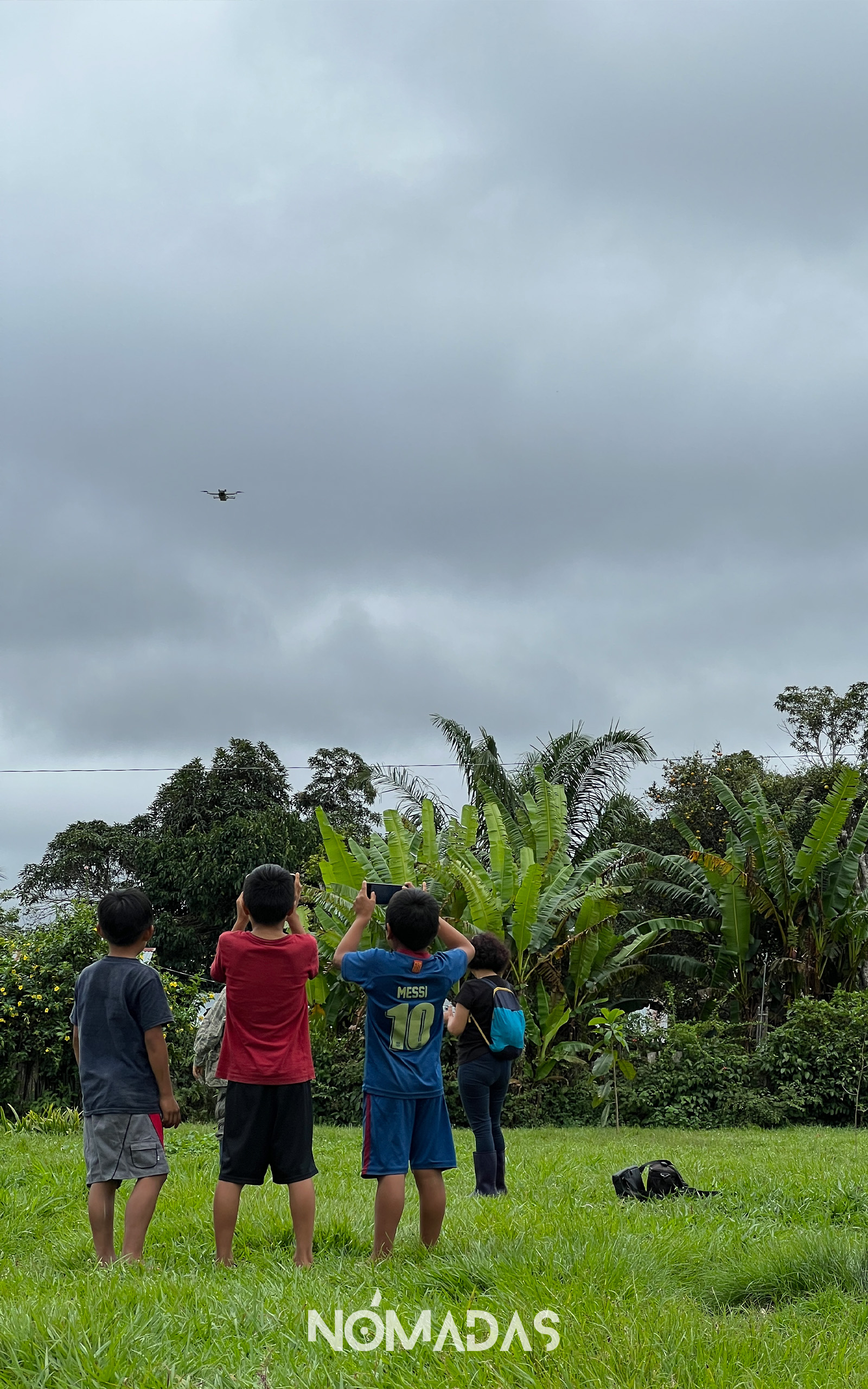
The children of San José, surprised by Nómadas’ drone.
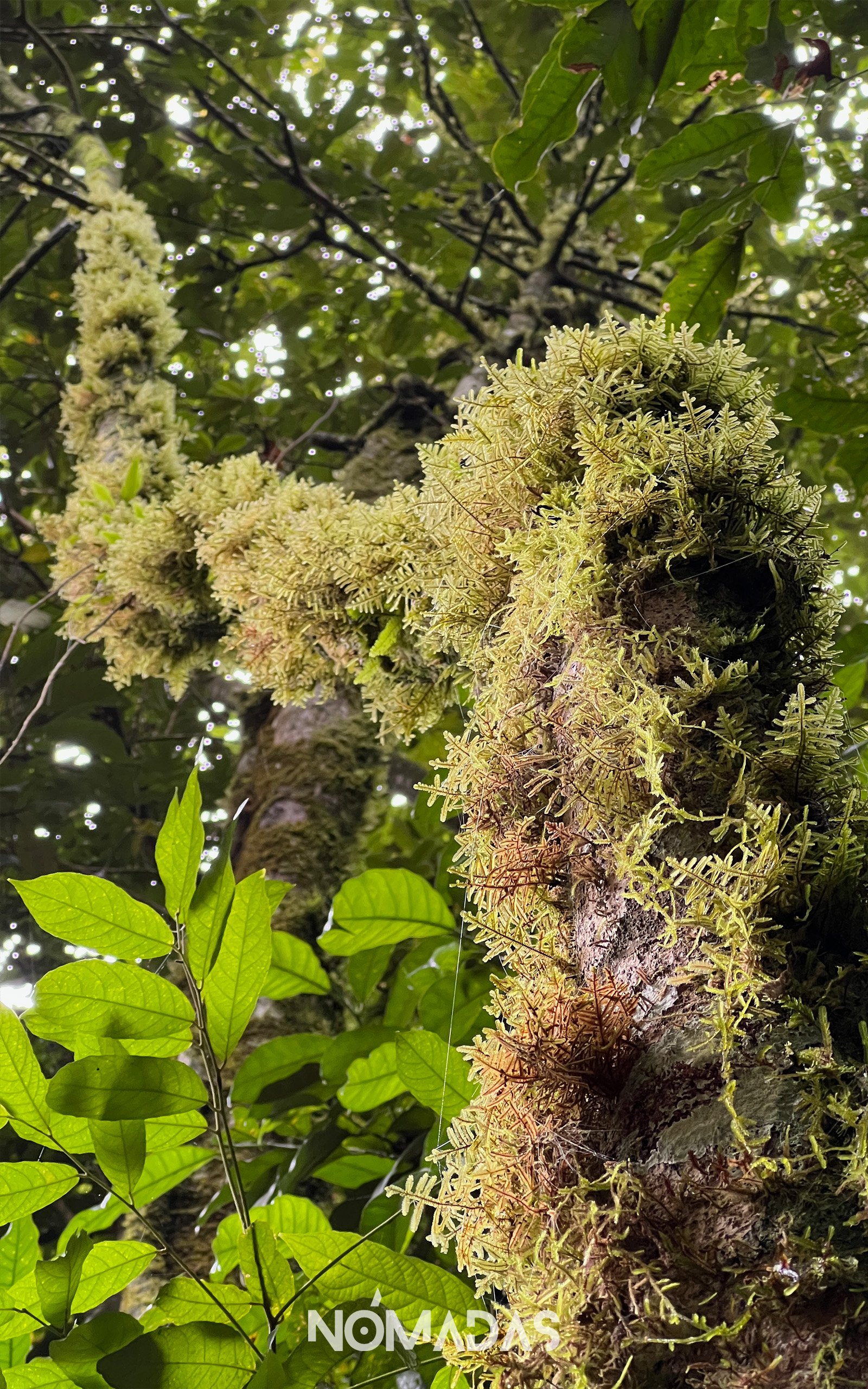
Madidi, a source of natural wealth.
The gaze widens, transcending the borders of San José and focusing on the perspective of public policies in the country. Forno passionately expresses his concern: «This is the main concern because mining, land trafficking, and the issue of hydrocarbons, when not addressed properly, are consequences of a development vision that is not only rooted in the current government but also permeates society as a whole. This is what worries me, and that’s why I consider the work of journalists essential because this is something that is present everywhere.»
Leading in mercury imports and protagonists in mining that contaminates rivers, the country appears to face a conflict between its resources and the quality of life of its inhabitants.
The root of these issues, suggests Forno, lies in the mentality entrenched in the state structure: «Historically, we have relied on lithium, tin, and silver at different times, which has created fundamental problems for our creative potential as a country.»
The path to a solution is visible, albeit not without difficulties. «This development vision, which encompasses mining and intertwines with laws like the ‘gold law,’ the lack of regulation in the import of mercury, and insufficient local governance and capacity to control these aspects, contributes to the problem,» acknowledges Forno, pointing out the deep-seated causes that need to be debated and addressed.
However, the director of Conservation International does not succumb to discouragement. His hope lies in examples like those emerging in Alto Beni and Palos Blancos, where strongholds are being built against the greed of mining. «Here, they have implemented agroforestry systems and established a protected area covering 30% of their territory. Most notably, they have enacted a municipal law prohibiting mining and mining pollution,» narrates Forno, shining a light on resistance and innovation.
In the heart of San José, amidst the challenge, Eduardo Forno weaves words of struggle and hope. His voice resonates as a guide, inviting us to rethink the relationship between humans and nature, between resources and responsibility.
***
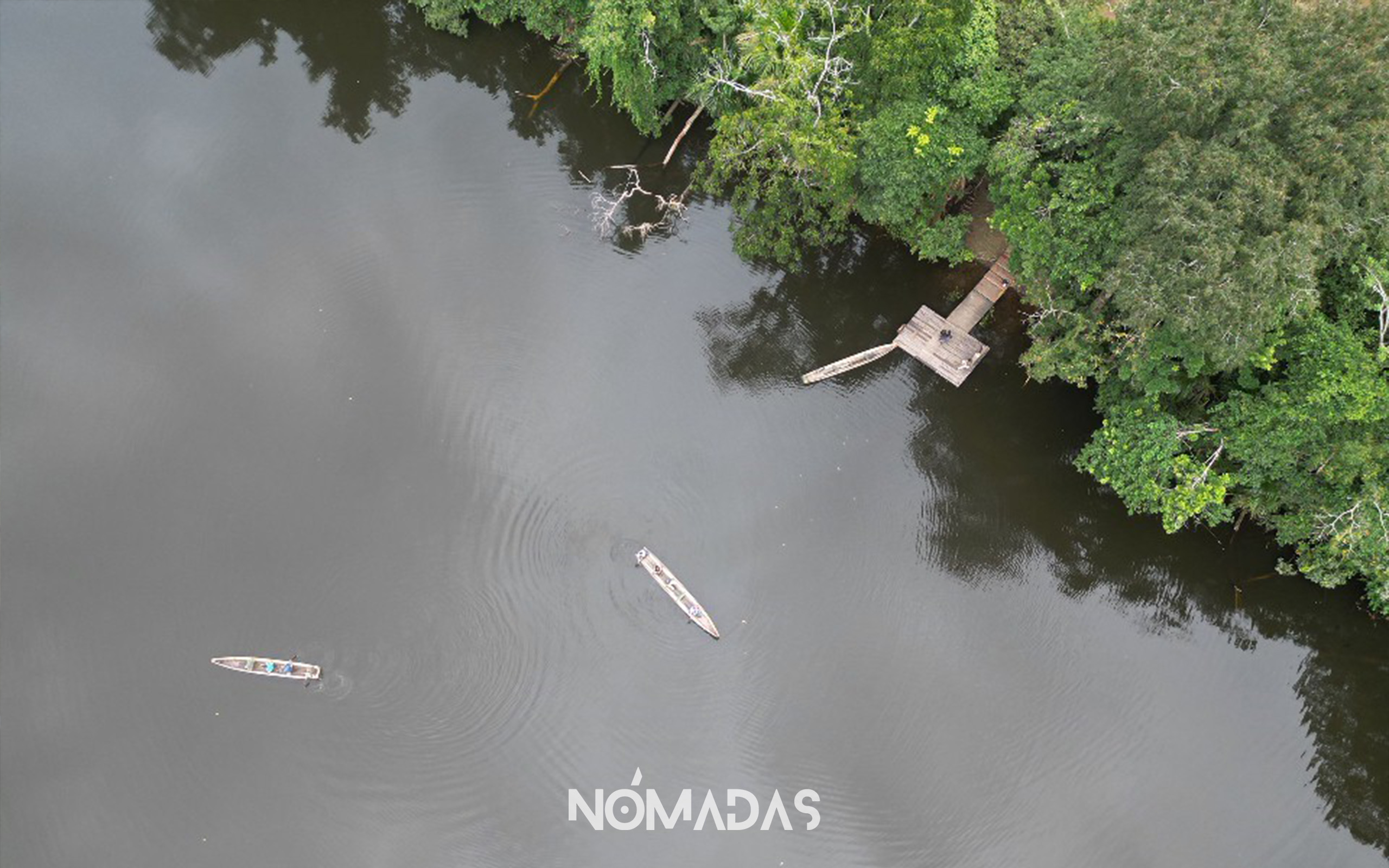
In Lake Chalalán.
The captivating backdrop of Madidi National Park stands as one of the custodians of this natural wonder. With more than two decades of dedicated service, Park Ranger Francisco Pana passionately showcases Madidi’s biodiverse richness, where 5,515 plant species flourish in a vibrant dance spanning from 6,000 meters in altitude to the lush jungle below. His monitoring and surveillance work is a living testament to his commitment, as demonstrated by the recent installation of a barrier near the community of San José de Uchupiamonas to protect the park from miners’ entry. However, Pana emphasizes that this measure is not sufficient and calls for a larger contingent of park rangers, as Madidi only has 12 of them in Zone A and a total of 26 for the entire area.
Despite uncertainties, a thread of hope runs through San José de Uchupiamonas. The current peace is built with an eye on the future, with the community on alert for the possibility of mining incursions but organized and willing to defend their territory. While challenges persist, solutions are budding, and among them, ecotourism and good governance shine brightly in San José. For this endeavor, they find support in institutions like the Nativa Foundation and Conservation International (CI), aware that only through the unity of forces can they achieve their cherished goals.
***
STAFF:
DIRECTOR: Roberto Navia. PERIODISTA: Iván Paredes. PRODUCTION MANAGER: Karina Segovia. PHOTOGRAPHS: Karina Segovia, Lisa Mirella Corti. SOCIAL MEDIA EDITOR: Lisa Mirella Corti. WEB DESIGN AND DEVELOPMENT: Richard Osinaga.
Te contamos desde el interior de los escenarios de la realidad, iluminados por el faro de la agenda propia, el texto bien labrado y la riqueza poética del audiovisual y de la narrativa sonora, combinaciones perfectas para sentir el corazón del medioambiente y de los anónimos del Planeta.
